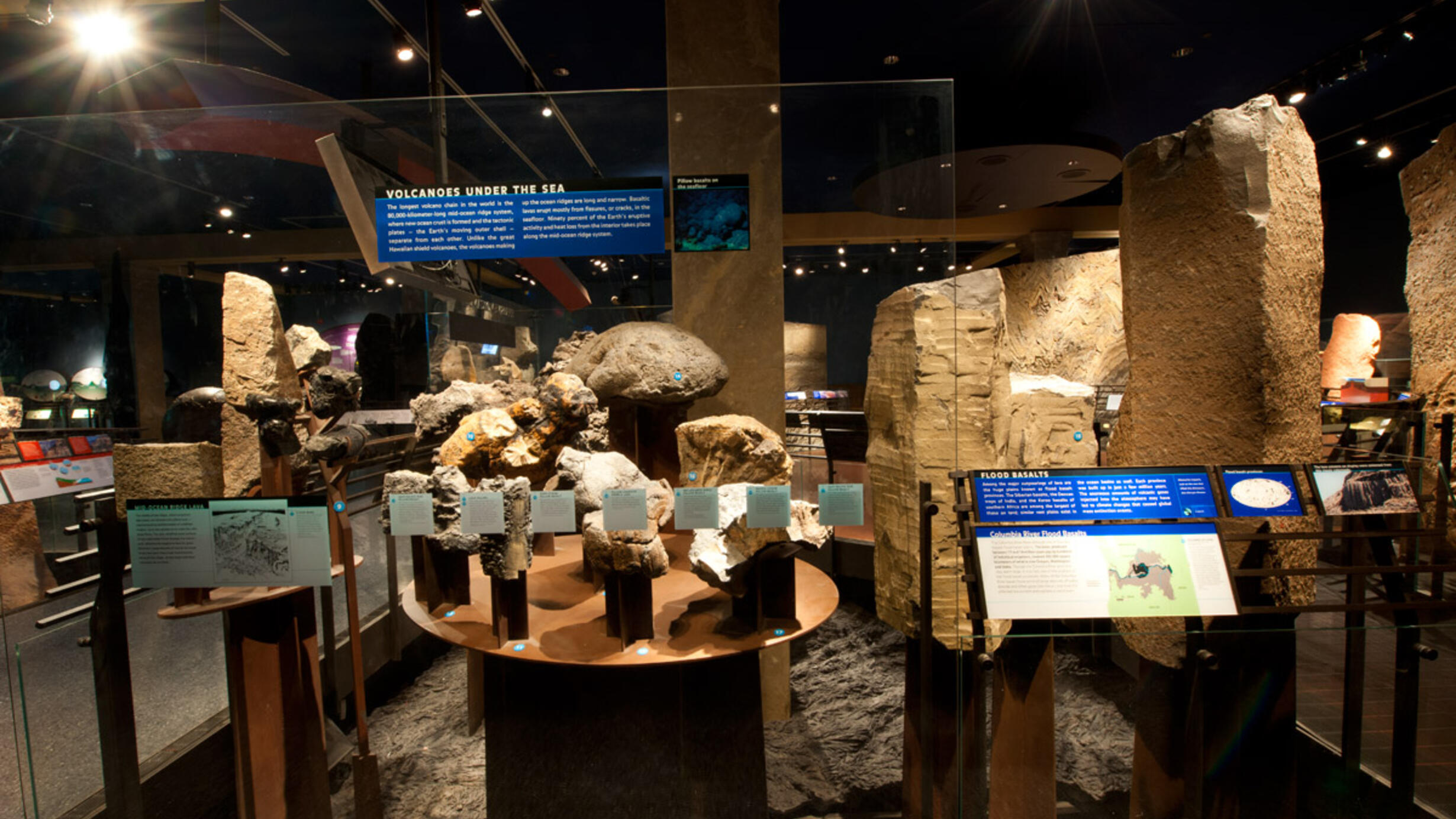Volcanoes Under the Sea
Part of Hall of Planet Earth.

The longest volcano chain in the world is the 80,000-kilometer-long mid-ocean ridge system, where new ocean crust is formed and the tectonic plates - the Earth's moving outer shell - separate from each other. Unlike the great Hawaiian shield volcanoes, the volcanoes making up the ocean ridges are long and narrow. Basaltic lavas erupt mostly from fissures, or cracks, in the seafloor. Ninety percent of the Earth's eruptive activity and heat loss from the interior takes place along the mid-ocean ridge system.
Mid-ocean Ridge Lava
The middle of the ridges, where eruptions take place, are littered with pillow lavas – interconnecting sack-like bodies of solidified magma. Lavas also spread out to make flat, thin sheet flows. The old, solidified outer surfaced of the underwater flows insulate the molten rock, allowing the magma to flow for great distances. Large amounts of lava do not erupt at any one spot: they erupt intermittently along all the ridges, so that large individual volcanoes do not form.